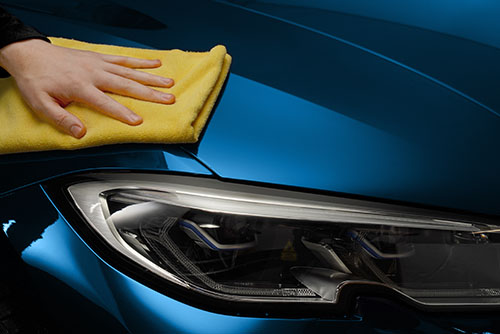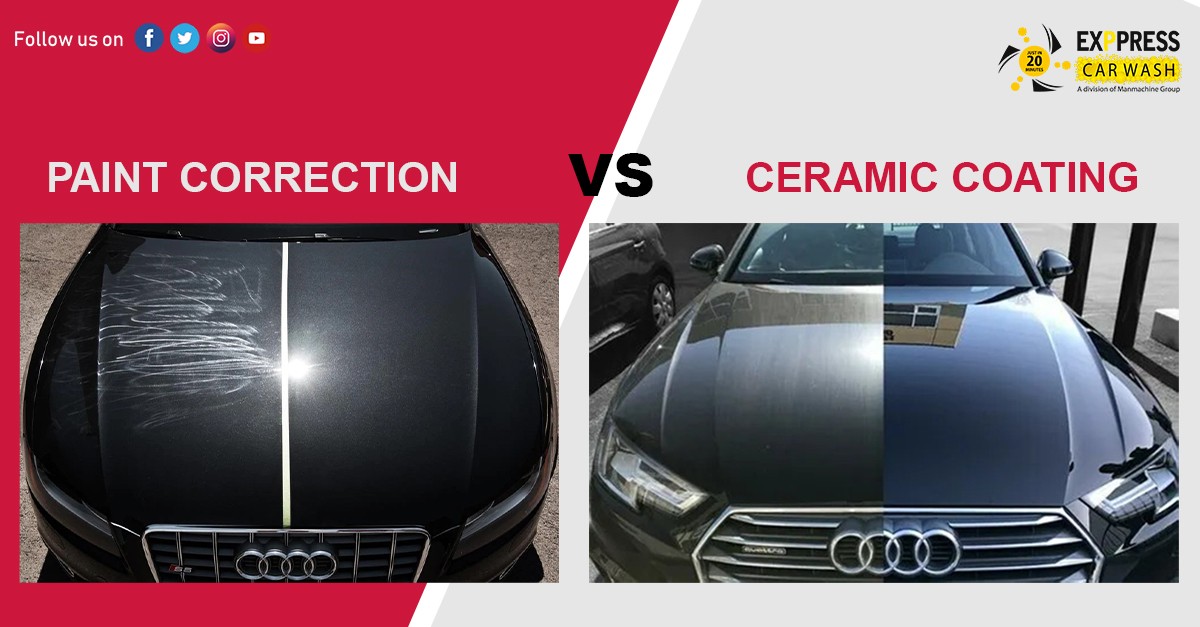The Role of Ceramic Coating in Protecting Your Car's Paint From Environmental Damages
Ceramic coating has actually arised as an advanced service for car owners looking for to maintain the honesty of their automobile's exterior. By establishing a durable chemical bond with the paint, this sophisticated innovation offers a formidable obstacle against various ecological dangers, such as UV rays, acid rain, and pollutants. Comprehending the extensive benefits and the details of the application procedure is necessary for maximizing its performance. As we explore the nuances of ceramic coating, it comes to be obvious that the selection to execute this safety step could significantly influence your lorry's longevity and visual.
What Is Ceramic Finishing?
Ceramic layer is an advanced liquid polymer put on the outside surface areas of a lorry, made to provide a resilient layer of security for the paint. This cutting-edge remedy forms a chemical bond with the vehicle's factory paint, producing a resistant and hydrophobic guard. The layer contains nanoparticles that fill out the microscopic imperfections in the paint, resulting in a smooth surface area that boosts shine and gloss.
Commonly, ceramic coatings are available in numerous solutions, permitting various degrees of security and durability. While some products can last for several months, others offer protection for several years, depending on the thickness of the application and ecological variables. The application procedure needs precise preparation, consisting of cleaning, sanitizing, and brightening the lorry's surface to guarantee optimum attachment of the finish.

Benefits of Ceramic Coating
Among the primary advantages of using a ceramic covering is the exceptional security it supplies to auto paint. This sophisticated layer creates a sturdy layer that guards the car's surface area from a selection of ecological dangers, including UV rays, acid rain, bird droppings, and tree sap. By offering this robust defense, ceramic coverings dramatically minimize the risk of fading and etching, preserving the auto's aesthetic allure gradually.
In addition to protection, ceramic layers are renowned for their hydrophobic residential or commercial properties, which ward off water and dirt, making it less complicated to preserve a clean vehicle. This self-cleaning impact decreases the regularity of washing, saving both time and sources. Ceramic finishings boost the deepness of the paint's gloss, resulting in a dynamic and sleek look that raises the total appearance of the automobile.
Another significant benefit is the longevity of ceramic coverings. Unlike typical waxes or sealers that call for regular reapplication, ceramic coatings can last several years, providing an affordable option for vehicle proprietors looking for long-term defense. Generally, buying ceramic finish results in improved toughness, lowered maintenance, and sustained aesthetic allure for vehicle paint.
How Ceramic Layer Works
A ceramic finishing operates through a chemical bonding procedure that develops a safety layer on the vehicle's paint surface area. This ingenious service uses sophisticated nanotechnology, where tiny particles of silica are suspended in a fluid form - ceramic coating. Upon application, these particles bond with the factory paint, creating a resilient and hydrophobic layer that boosts the car's surface
The primary part of ceramic finishes, silicon dioxide (SiO2), contributes to the finishing's strength and durability. When treated, the finish changes right into a hard, glass-like surface that shields the paint from ecological impurities such as dust, UV rays, bird droppings, and tree sap. This molecular bond causes a surface that is not just resistant to scrapes yet also less complicated to clean, as dust and crud are less most likely to stick.
Additionally, the hydrophobic homes of ceramic finishings trigger water to grain and slide off, reducing the possibilities of water spots and natural resource. This protective barrier efficiently lengthens the life of the paint and keeps the car's visual charm, supplying vehicle owners a lasting solution for paint defense.
Application Process of Ceramic Finish
When thinking about the application of ceramic coating, preparation is essential to accomplishing optimal outcomes. The first step includes extensively washing the lorry to get rid of dirt, crud, and impurities from the surface area. This often includes a decontamination procedure making use of clay bars or chemical cleansers to guarantee the paint is flawlessly tidy. Any type of imperfections or scratches ought to be attended to at this phase, as the finish will certainly bond with the surface underneath.

Ceramic finishing is then applied in tiny sections, typically making use of an applicator pad. The lorry ought to be left to cure in a controlled setting to permit the coating useful site to totally bond with the paint.
Long-Term Upkeep and Care
Achieving a successful ceramic covering application establishes the structure for long-lasting defense, yet appropriate upkeep is vital to maintaining its benefits. Routine cleaning is crucial; using a pH-neutral automobile hair shampoo will certainly help preserve the covering's integrity without triggering damages. Avoid automated car cleans that use abrasive products, as they can endanger the covering's surface.

Furthermore, using a ceramic finishing maintenance spray can enhance the existing layer, providing an additional increase in protection and sparkle. It's recommended to execute this every 3 to six months, depending on environmental exposure.
Last but not least, vehicle parking in shaded locations or using car covers can prevent prolonged direct exposure to hazardous UV rays and ecological impurities, additionally extending the life of your ceramic layer. By adhering to these maintenance methods, you can ensure your car's finish continues to be secured and aesthetically appealing for several years ahead.
Verdict
In recap, ceramic finishing offers as a vital safety procedure for automobile paint, effectively protecting vehicles from a variety of environmental threats. Its capacity to produce a robust hydrophobic obstacle not just boosts aesthetic appeal yet also substantially lowers the regularity and strength of maintenance required. The resilient nature of this sophisticated polymer emphasizes its worth in protecting vehicle stability and appearance, ultimately contributing to a much more sturdy and visually appealing automobile surface.
Ceramic finishing is an innovative liquid polymer applied to the outside surface areas of an automobile, check my blog created to give a durable layer of defense for the paint. Ceramic finishings enhance the deepness of the paint's gloss, resulting in a vibrant and refined appearance that raises the total look of the automobile.
A ceramic layer runs via a chemical bonding process that creates a safety layer on the car's paint surface.The major part of ceramic finishings, silicon dioxide (SiO2), contributes to the finishing's toughness and strength.In recap, ceramic coating serves as a crucial protective procedure for vehicle paint, effectively protecting cars from an array of ecological hazards.